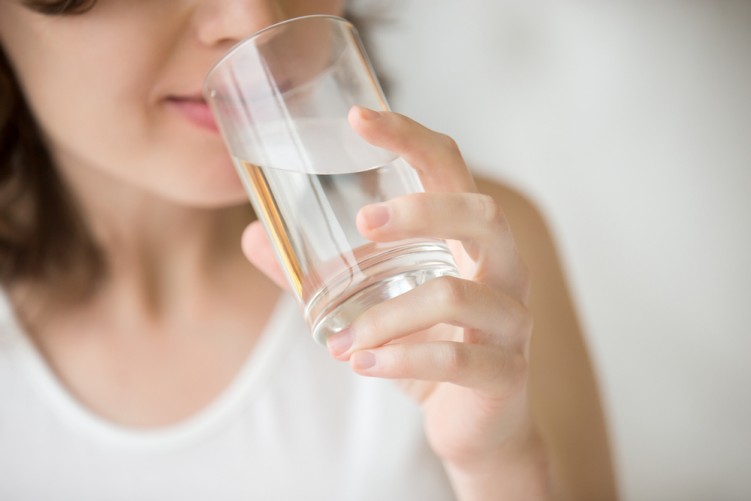What is a Waterborne Diseases?
Water efforts to improve access to drinking water across India have been unfortunately matched by the proportionate declines in deaths and Illnesses from different waterborne diseases, which are remaining grossly underestimated as reported by the latest health ministry under the government of India.
The potable water infrastructure has covered nearly 85% of India’s population across this vast country. The planning commission of India has authenticated this. The planning commission of India is a top policy-making body under the government of India.
Children aged under five years and whose numbers are between four lakh to five lakh die every year from diarrhea, a dangerous waterborne disease, the report said, failure to improve personal and home hygiene as a prime factor.
The report also cautioned the failure in epidemiological surveillance is leading public health authorities to record only a small fraction of cases of waterborne diseases.
The reported cases of hepatitis in 100000 people is 12 cases as per the incidence. The two studies of the urban communities have given the data to be 100 cases per 100000 checked people. The report also suggests that only a small fraction of diarrhoeal diseases are picked up through such surveillance.
A World Health Organisation sponsored report says that improvements in hygienic conditions are not likely unless the dramatical improvement in sanitation coverage. Without a proper supply of water, children cannot often wash and thus contact eye infections and skin problems such as scabies.
It was also reported that poor water quality and the lack of total disposal of human, animal, and household wastes are the main factors for waterborne diseases. It was also reported that only 30% of the total wastewater in India is treated by effluent plants before being disposed of. And the untreated balance water flows into the open drains, rivers, lakes and underground water resources.
One of the reports also states that the actual quality of water supply varies widely from place to place. In cities and rural areas, there is a great lacking in the Quality Assurance of the water. The water that is passed off as pure drinking water leaves much to be desired. These facts are stated by Dr. Chandrakant Pandav, a leading specialist in the All India Institute Of Medical Sciences.
List of Waterborne Diseases:
Now to further take the discussion, to let us discuss in detail the various waterborne diseases in India as given below.
-
Cholera:
Cholera is a water-related disease; oan is diarrhoeal in nature. If unattended, it can kill in hours. Cholera strikes when one drinks water that is infected with Vibrio Cholerae Bacterium.
-
Diarrhea:
The diarrhoeal infection spreads through food and drinking water, which has been contaminated. A diarrhoeal attack can last up to 15 days and leave the patient completely dehydrated.
-
Malaria:
The disease malaria is spread by a parasite called Plasmodium parasite mosquito (also known as the female anopheles mosquito) that breeds in water bodies like ponds, potholes, drains or any place where water is stagnant. Malaria can kill any child that is not vaccinated against the disease and can have grieve effects on a fully grown adult person.
-
Typhoid:
The symptoms of typhoid are fluctuating high fever, sleepiness, exhaustion, diarrhea, etc. It spreads through contaminated food and water or close contact with an infected person.
-
Filariasis:
Filariasis is a parasitic disease and attacks people who dwell near unsanitary water bodies or open sewage systems. Filariasis is spread by mosquitoes that breed in fresh and stagnant water bodies and is the host of the filarial nematode worm. This worm affects human beings and leads to elephantiasis.
-
Gastroenteritis:
Commonly also known as food poisoning. It occurs with the consumption of contaminated water or food. This results in fatal life taking situations and leaves the patient completely dehydrated.
-
Giardia and Cryptosporidium:
Giardia and Cryptosporidium are minuscule parasites or sores that can be found in water. Giardia causes an intestinal ailment called giardiasis or “beaver fever.” During the previous 2 decades, Giardia contamination has gotten perceived as one of the most widely recognized reasons for waterborne infection (found in both drinking and recreational water) in people in North America. Giardia are discovered worldwide and inside each locale of Canada and the US. Cryptosporidium is answerable for a comparative disease called cryptosporidiosis. Drinking water sources become polluted when excrement containing the parasites are kept or flushed into water. In the event that treatment is insufficient, drinking water may contain adequate quantities of parasites to cause sickness.
-
Dysentery:
Loose bowels alludes to any instance of irresistible wicked the runs and is otherwise called the ridiculous motion, motion, voyagers looseness of the bowels and Montezuma Vengeance. Looseness of the bowels murders upwards of 700,000 individuals worldwide consistently. Most exploited people live in creating regions with poor sanitation, however sporadic cases do introduce far and wide.
-
Salmonella:
Salmonellosis is a contamination brought about by the microscopic organisms called Salmonella, which has been known to cause sickness for over 100 years. There are a wide range of sorts of Salmonella microorganisms, and they are spread through human or creature excrement.
Waterborne Diseases Effects on Human Health
The Central Bureau of Health Intelligence has proven that the incidences of diarrhea centric fever, viral hepatitis, and cholera has escalated from the same level as it was in the past decade. All the waterborne diseases have taken an upper route in the past decade.
The contamination of freshwater by fluoride also has effected the large population in the rural areas of India, as stated by the report. The report further noted that more than 25 million people across 17 states have to consume water with high concentration levels of fluoride which are much more higher than the permissible levels allowed by the health ministry of India. It was also stated that the excess of fluoride could also cause a condition which is known as the skeletal fluorosis.
The water supply in India is available from the Water Resources Division, Government of India, Planning Commission, Yojna Bhavan, Parliament Street, New Delhi.
Concluding, let us discuss the prevention of getting infected by the waterborne diseases in our daily life. First and foremost, we should take care that there is no open collection of water in and around our house or place of work or our schools, colleges, etc. Any such water collection should be immediately removed, or if the water body is large, then a good amount of some mobile oil should be spread over the surface of the water. Go to your terrace or roof and get rid of broken flower pots, old tires, old vessels like buckets, mugs, etc. or any such thing which can collect water. Dry and clean your water room coolers every week and put a few drops of oil while refilling. Get all children and infants vaccinated against all such diseases. Do not waste time at the slightest symptom of a disease and rush the patient to the nearest hospital or doctor or any health care unit at the earliest. A stitch in time saves nine. Use mosquito repellent creams or use mosquito nets while sleeping.
How to Prevent Waterborne Diseases:
Avoidance Tips from waterborne infection incorporates. Just beverage perfect and safe water. Utilize either clean versatile water or water that has been treated with water purifiers. Try not to devour untreated water. Ensure that the put away water is liberated from germs and clean for later use.






 Users Today : 144
Users Today : 144 Users Yesterday : 586
Users Yesterday : 586 This Month : 7554
This Month : 7554 Total Users : 788545
Total Users : 788545